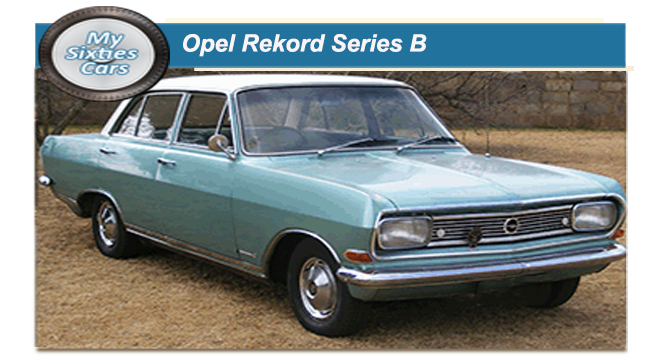
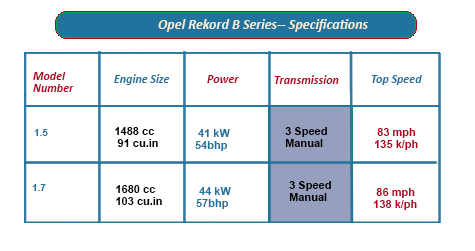 Opel had been producing Rekords since before the Second World War.
Opel had been producing Rekords since before the Second World War.
Opel had established a winning formula or placing an attractive body, but not overly so, on a solid chassis and powering it with a four-cylinder engine, with some permutations in production since the Thirties.
The Rekord B shared the wheelbase with the A, although from then onwards the changes were significant and many.
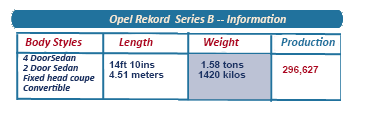 To begin with, the Rekord B had undergone a complete body re-design once again with strong similarities to its UK cousin, the soon to be released Vauxhall Viva HB.
To begin with, the Rekord B had undergone a complete body re-design once again with strong similarities to its UK cousin, the soon to be released Vauxhall Viva HB.
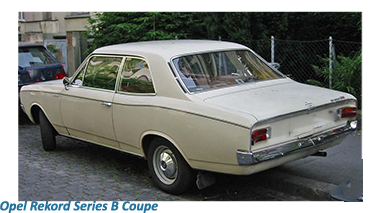 However, it was in the powertrain that the significant changes took place, with GM having developed a new and technically advanced series of four-cylinder engines, with an integrated camshaft operated through its cylinder head.
However, it was in the powertrain that the significant changes took place, with GM having developed a new and technically advanced series of four-cylinder engines, with an integrated camshaft operated through its cylinder head.
 As well as its standard four-speed manual transmission, the 1900 S version could also come fitted with fully automatic transmission.
As well as its standard four-speed manual transmission, the 1900 S version could also come fitted with fully automatic transmission.
![]()
It soon became evident to those following developments in the West Europe car industry that Opel saw the Rekord B as something of “ stop-gap” between the A and the C, and even came fitted with a few of the refinements that would come with Opel’s new Rekord, released less than a year later.
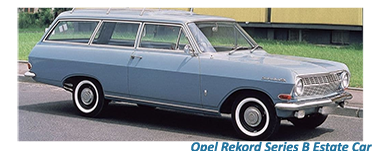 The Rekord B series only remained in production for just over a year, a factor that either indicates Opel’s tremendous efficiency or lack of it.
The Rekord B series only remained in production for just over a year, a factor that either indicates Opel’s tremendous efficiency or lack of it.
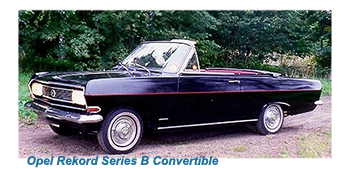 During the annual summer break at Opel’s massive plant at Russelsheim- am- Main in 1966, the Rekord B was taken out of production and replaced with the Rekord C with nary a hiccup.
Despite its short production run, the Opel Rekord B series put up a creditable performance, selling slightly fewer than 300,000 models in exactly one year.
During the annual summer break at Opel’s massive plant at Russelsheim- am- Main in 1966, the Rekord B was taken out of production and replaced with the Rekord C with nary a hiccup.
Despite its short production run, the Opel Rekord B series put up a creditable performance, selling slightly fewer than 300,000 models in exactly one year.
In 1950 the picture at Opel was looking a lot brighter, especially when GM announced that they would not be turning their back on the company ( and their massive investment) and would welcome them back into the fold.
During the Fifties and Sixties, demand for Opel continued to reach steadily above 100,000 annually for the first time in the post-war years in 1953 and increasing by more 60% the following years.
Today, still under the GM umbrella, Opel has grown to become a global force, offering a choice of well designed and solidly constructed vehicles.
EU5



